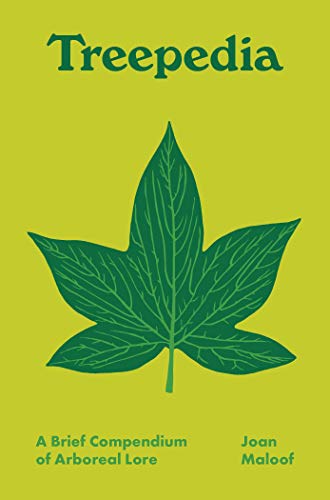Pregnant women with a view of trees from their window are less likely to have a miscarriage. This is an extreme example of how trees positively affect us – even from before birth. We are just now realizing the many ways trees, within their forested ecosystem, improve our health and mental well-being. During the pandemic the calming, healing, effects of forests were sought by more people than ever. Many parks saw their visitation increase six-fold. I, too, sought out the forests during those days of isolation; but I also sat inside and wrote my mini-encyclopedia, Treepedia. The green cloth-covered diminutive book discusses special old-growth forests, exceptional forest saving individuals (both dead and alive), and individual tree species. If you want to be conversant in “tree” this is a great collection of tidbits. If you are already a tree-lover you will learn new things about your old friends here.
Here I share two of the entries:
Forest Bathing
The practice of going into the forest for its health effects. This is also known as shinrin-yoku, which is Japanese for “forest bathing.” In an interesting twist, in Japan the popular term used to describe forest bathing is foresuto serapī, a transliteration of the English. By whatever name this practice is called, Japan is the world leader in research regarding the health benefits of spending time in the forest. They are creating a network of one hundred forests throughout the country solely for their therapeutic effects. Time spent walking in a forest has been shown to reduce blood pressure, reduce blood sugar, reduce the stress hormone cortisol, and to boost immune function. Forest bathing also has positive effects on mood and brain chemistry. Although Japanese researchers have been studying the health benefits of the forest since the 1980s, it was only popularized in the Western world since 2005, when I discussed it in Teaching the Trees. Today one can take online classes and even earn certificates in “Forest Therapy.”
Willow
A tree found in wet areas around the northern part of the globe. The genus name for the willow, Salix, is derived from the Celtic meaning “near water.” Willows are some of the most difficult trees to identify to species. There are many hundreds of different willow tree species, and they crossbreed easily in the wild. On top of that there are many cultivars created for the horticultural trade—more than 800 at the last count. But even these counts vary, as some claim that there were 1,200 varieties of willow at the Long Ashton Research Station in England before it closed in 2003. They had sixty cultivars of basket willow (Salix viminalis) alone. Before the invention of plastics, the rods from coppiced basket willow plants were used to make all kinds of storage vessels. In 1938, H. J. Massingham wrote about visiting a countryside basket maker: “In two hours—we took half the time talking—I watched a bundle of rods wave and bend and twist until they had reached a final end in which the art and the use were one, an architectural experience I am not likely to forget.”
Willows vary vastly in size. While some of the Arctic willows are only a few inches tall, the majority of willows are shrubby, and only a few dozen species are tree-sized. The largest is the black willow (Salix nigra), but it is rare for even that tree to reach sixty feet. Willows are the James Dean of the arboreal world: “Live fast, die young” could be their motto too. They take root very easily and grow very quickly, rewarding their human caretakers with a feeling of accomplishment, but it is very likely that those same humans will witness the death of their beloved tree. Could this be the reason willow trees are featured in myths throughout the world? Greeks, Japanese, Irish, and Native Americans all have songs and stories about willows. The Greeks believed that planting a young willow and watching it grow would ease the passage of the soul at death. The Celts believed a willow planted over a grave would retain the essence of the departed one. Some cultures believed that willow under your pillow would enhance dreams and their recollection. Willow twigs are used in some Wiccan love spells.
Willows are dioecious, meaning that individual trees produce only male or female flowers. Their flowers emerge very early in the spring, well before their leaves appear. One of the most well-known willow shrubs is the pussy willow (Salix discolor). Now considered a somewhat “old-fashioned” plant, it found a spot in many rural gardens for the sheer pleasure it brought from starting its spring growth so early in the year. The pollen-filled anthers of the male flowers are surrounded by grayish fuzzy hairs that resemble fur—the fur of tiny gray kittens, hence the moniker “pussy willow.” Just as evergreens brought inside at winter solstice were reminders that life goes on even in winter, so, too, pussy willows were celebrated as signs of new life. In the Christian church, Palm Sunday is the week before Easter, but the tropical palms used to herald Jesus’s arrival into Jerusalem the week he was to be crucified were not always available for church services in Europe and North America, so pussy willows were often used in their stead.
Of all the hundreds of different willows, there is one that is known beyond all others. When asked to fill in the blank—“(blank) willow”—the majority of people say “weeping.” These trees with pendant branches reaching down to the ground are fixed in the memory of many a child. I, too, once gathered handfuls of flexible twigs and swung on the {change “the” to “a”}willow like the smallest Jane of the jungle.
Weeping willow is a commonly known tree, but it has given taxonomists a headache. The simple story is that the classic weeping willow is Salix babylonica, a tree native to China and not Babylon, as the name implies. The Chinese were cultivating this tree hundreds of years ago, so many cultivars and hybrids exist. However, Babylon willow is not reliably hardy in North America, hence, most of the weeping willows there are most likely hybrids of white willow and Babylon willow.
Even the experts agree that the nomenclature of weeping willows is “hopelessly confused.” In 1988 Frank Santamour, of the US National Arboretum, wrote that “many of the various names (species, hybrids, cultivars) under which weeping willows are presently cultivated in our major arboreta are virtually meaningless.” He recommended that most of the cultivar names should be abandoned by the nursery trade and we should start over: “There is no need to continue the confusion already rampant.” Although horticultural experts like to argue these points, this may be a case, like Shakespeare’s rose, of a tree that can be loved and admired no matter what its name.



